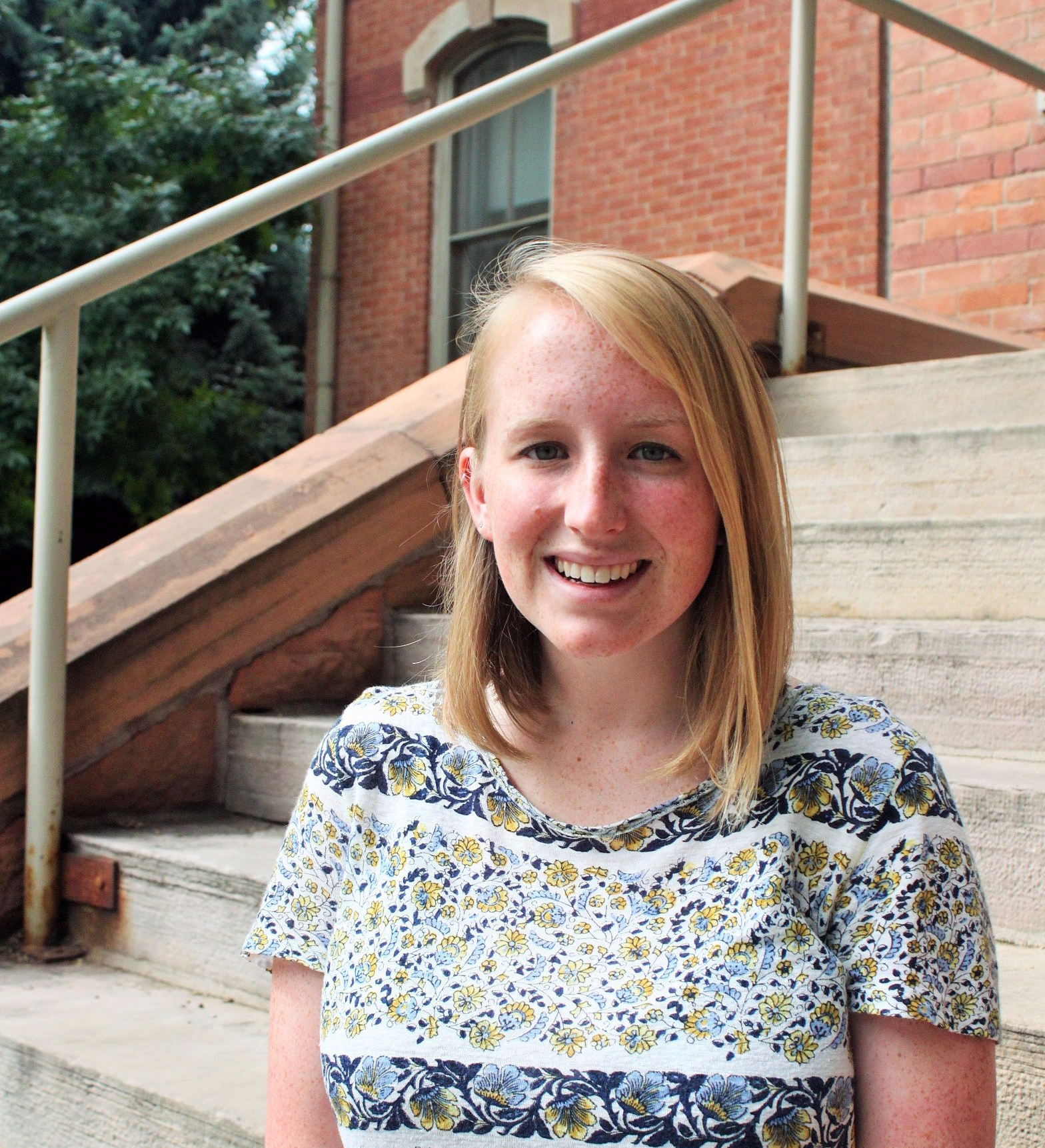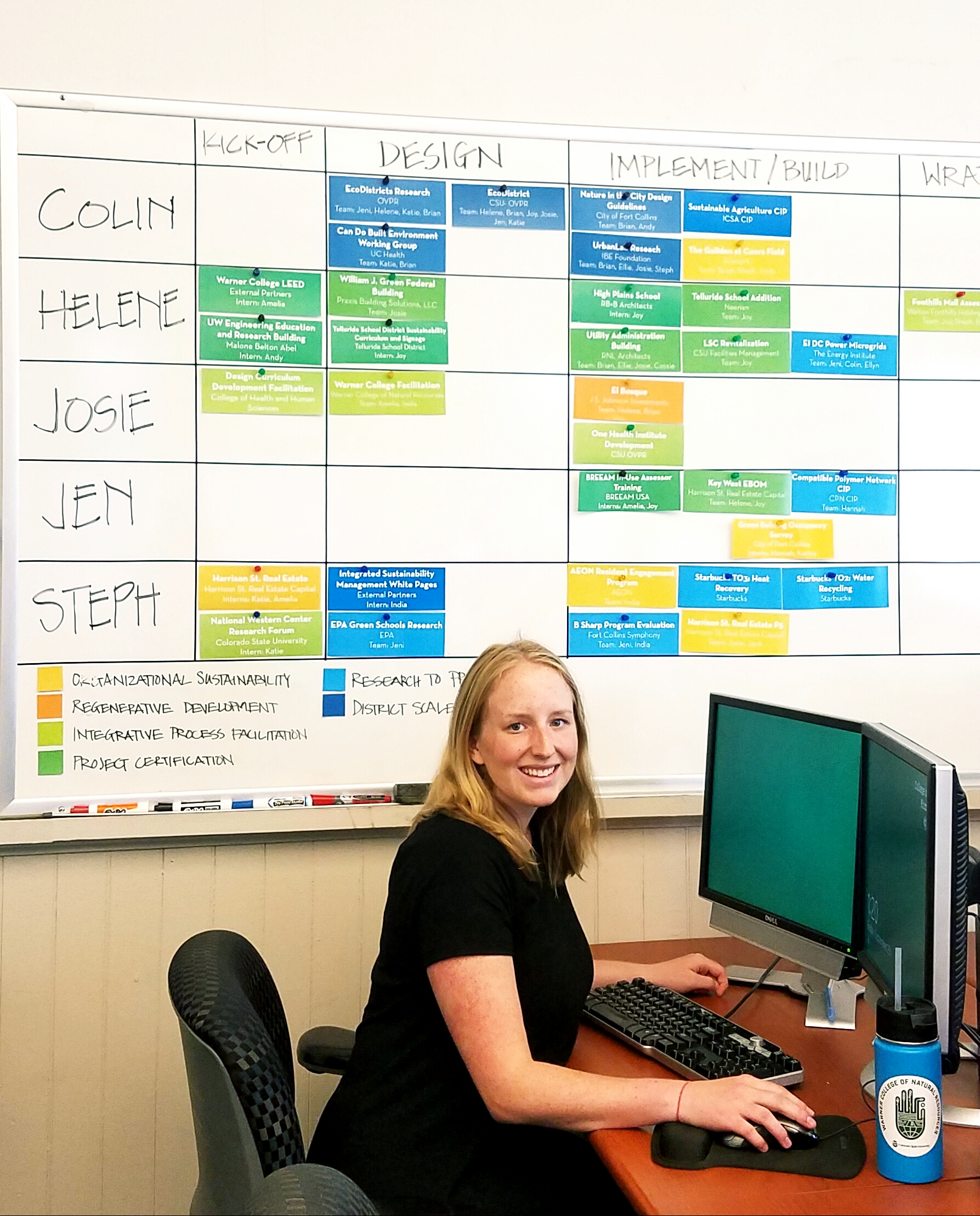
Amelia Howe
Sustainability Associate
I recently graduated from CSU with my BS in Human Dimensions of Natural Resources and a minor in Global Environmental Sustainability. With programs like mine that focus on natural resources and natural resource management, the connection to the built environment may not seem obvious. However, with increasing urbanization and population growth, urban ecosystems and our built environment have officially connected with nature. I am surprised it took me so long to realize that these entities need to work together as a single system rather than act as two separate systems to thrive, and I owe the majority of this realization to my work with IBE and my CSU courses in Human Dimensions.
Finding IBE
So how did a natural resource student

find her passion in the realm of urban and regional
design and the built environment? Rewind to Summer of 2015. I was interning with the US Forest Service and volunteering with the City of Fort Collins Environmental Planning department when I met Brian Dunbar, IBE’s executive director, on a walking tour of Fort Collins. He told me all about IBE and a project called “Nature in the City” that immediately sparked my interest. I left that fateful tour with a business card in hand and a mission in mind: become a part of IBE’s team. I remember interviewing for my position a few weeks later and feeling that my background did not relate much to IBE’s mission to “Advance the development of healthy, thriving built environments,” but IBE saw the connections between my work and its mission in ways that I was not yet able to understand.
Discovering the Built Environment Lens
I will never forget my first day on the job. I took a deep breath, walked in, and dove straight into a sustainable affordable housing design charrette. Talk about intimidating. At that point, I knew nothing about the building and design process, and had to look up the word “charrette” before I left my house that morning. While I felt a bit out of place at first, it was in this meeting where I began to see the connection between people and place through a new lens. We were discussing plans for a new development and the conversation was not focused on time, money, and convenience, but instead on how healthy, efficient buildings lead to healthy, thriving humans. It all began to click for me in that four-hour design charrette; the connections foreseen by my mentors finally made sense to me.
The Intersect of Urban & Natural
 During my time with IBE, I have been given the opportunity to dive headfirst into an abundance of diverse project work. With each new project comes new lessons learned, new additions to my “professionalism toolbox,” and new realizations of how I can apply my passion of the natural-urban intersect in the real world. From corporate sustainability projects with Denver International Airport and Harrison Street Real Estate (a $12B asset management company), to city planning initiatives like Nature in the City and the Green Built Environment Program, to LEED and other green building projects like the new Warner College Building addition, it is safe to say I have cultivated a unique project portfolio. Looking at these projects on the surface, one may wonder how I did this all in the scope of one internship. I did not understand it at first either, but the answer is this: the one tie that these entirely different projects share is the importance of sustainability, in all scales and forms. If we are intentional in the way we operate our businesses, build our buildings, develop our city plans, and make purchasing decisions, we can make huge differences on not only a local scale, but also a global scale.
During my time with IBE, I have been given the opportunity to dive headfirst into an abundance of diverse project work. With each new project comes new lessons learned, new additions to my “professionalism toolbox,” and new realizations of how I can apply my passion of the natural-urban intersect in the real world. From corporate sustainability projects with Denver International Airport and Harrison Street Real Estate (a $12B asset management company), to city planning initiatives like Nature in the City and the Green Built Environment Program, to LEED and other green building projects like the new Warner College Building addition, it is safe to say I have cultivated a unique project portfolio. Looking at these projects on the surface, one may wonder how I did this all in the scope of one internship. I did not understand it at first either, but the answer is this: the one tie that these entirely different projects share is the importance of sustainability, in all scales and forms. If we are intentional in the way we operate our businesses, build our buildings, develop our city plans, and make purchasing decisions, we can make huge differences on not only a local scale, but also a global scale.
Today
Fast forward to the present. I have just accepted a job offer as program administrator of field education with Teton Science School in Jackson, Wyoming, and am transitioning out of my project work at IBE. I can confidently say I understand what a design charrette is, and can even help facilitate one. I feel that I have gained a lifetime’s worth of professional experience in the span of two years and I never could have felt this confident entering into my new job than I do now thanks to the mentoring and professional development IBE has offered me. IBE was the best part of my undergraduate experience at CSU, and I will always be so grateful for the skills I gained through the mentoring program and the projects I tackled. On to the next adventure I go!
